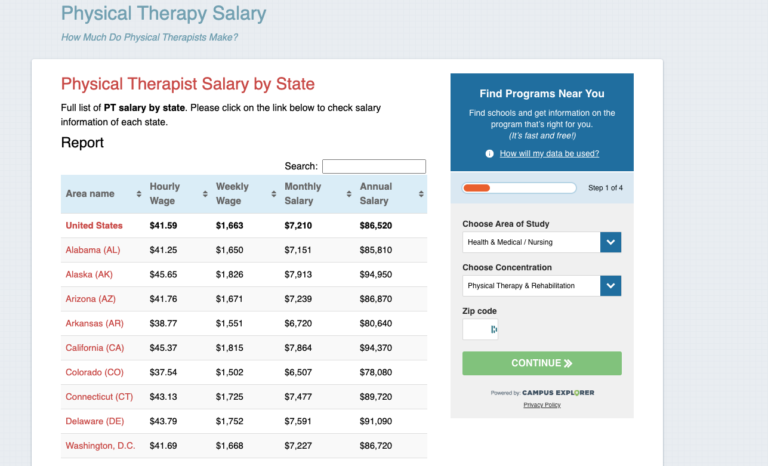MIPS 3: Understanding MIPS Performance Categories

Introduction
If you haven’t already seen article 1 and article 2 of this series, feel free to read them first if you like. Remember that you can review the Medicare MIPS quick start guide here. In this article we’ll delve into the MIPS Performance Categories for Physical Therapy.
Quality Category – Understanding MIPS Performance Categories
In today’s healthcare landscape, quality is of utmost importance for any physical therapy clinic. As a physical therapy clinic owner, understanding and mastering the Merit-based Incentive Payment System (MIPS) is crucial to ensure the delivery of high-quality care and maximize reimbursements. This subchapter delves into the quality category of MIPS and provides valuable insights on how it applies specifically to physical therapy clinics.
The quality category of MIPS measures the quality of care provided by healthcare professionals, including physical therapists, based on specific performance measures. This category accounts for 45% of the total MIPS score, making it a significant component that directly impacts reimbursement. By focusing on quality improvement, physical therapy clinic owners can not only enhance patient outcomes but also optimize financial incentives.
To successfully navigate the quality category, clinic owners must first identify the relevant quality measures for physical therapy clinics. These measures assess various aspects of patient care, such as functional outcomes, patient satisfaction, and adherence to evidence-based practices. It is essential to select measures that align with the clinic’s specialty, patient population, and practice goals.
Implementing a robust data collection and reporting system is crucial for meeting the quality category requirements. Clinic owners should invest in electronic health records (EHR) systems capable of capturing and reporting quality data accurately. These systems streamline data collection, reduce errors, and provide real-time feedback on performance measures. Regularly reviewing and analyzing this data allows clinic owners to identify areas for improvement and implement evidence-based interventions effectively.
Collaboration and communication within the clinic team are vital for achieving high-quality care. Clinic owners should foster a culture of continuous quality improvement by engaging all staff members in the process. Regular team meetings, performance reviews, and staff education sessions can help ensure that everyone remains informed and committed to delivering excellent care.
In addition to meeting the MIPS requirements, focusing on quality improvement can lead to enhanced patient satisfaction and loyalty. Patients who receive high-quality care are more likely to recommend the clinic to others, resulting in increased referrals and business growth.
By understanding MIPS performance categories in PT generally, and mastering the quality category specificially, physical therapy clinic owners can strengthen their clinic’s reputation, improve patient outcomes, and maximize reimbursements. Investing in the necessary resources, infrastructure, and staff training for quality improvement will undoubtedly yield long-term benefits for both the clinic and the patients it serves.
Promoting Interoperability Category
Promoting Interoperability Category: Enhancing Efficiency and Collaboration in Physical Therapy Clinics
As a physical therapy clinic owner, you understand the importance of staying up-to-date with the latest developments in healthcare regulations and initiatives. One such crucial aspect is the Promoting Interoperability (PI) Category, which aims to improve patient outcomes, enhance data sharing, and promote efficient workflows in your clinic. In this subchapter, we will dive deep into the world of PI and explore its relevance and benefits for physical therapy clinics.
The Promoting Interoperability Category, formerly known as Advancing Care Information, is a component of the Merit-based Incentive Payment System (MIPS) designed specifically for eligible healthcare professionals, including physical therapists. This category focuses on the implementation and utilization of certified electronic health record (EHR) technology to improve patient care delivery and coordination.
One of the primary objectives of the PI Category is to encourage the exchange of health information between providers, patients, and other relevant parties. By promoting interoperability, your clinic can streamline communication, reduce errors, and enhance collaboration, ultimately leading to better patient outcomes. Through the use of interoperable EHR systems, you can securely share patient data, such as treatment plans, progress notes, and lab results, with other healthcare providers involved in the patient’s care continuum.
Moreover, the PI Category emphasizes patient engagement and empowerment. It encourages the use of patient portals, which enable individuals to access their health records, view educational resources, request appointments, and communicate with their physical therapists. By actively involving patients in their own care, you can foster a sense of ownership and responsibility, leading to improved treatment adherence and overall satisfaction.
Participating in the PI Category also offers financial incentives for your clinic. By successfully reporting on the required measures and objectives, you can earn a higher MIPS score, which translates into increased Medicare reimbursements. Additionally, demonstrating your commitment to interoperability and patient engagement can enhance your clinic’s reputation, attracting more patients and referrals.
To ensure success in the Promoting Interoperability Category, it is crucial to evaluate your clinic’s current technology infrastructure and identify any gaps or areas for improvement. Investing in a certified EHR system that meets the PI requirements and aligns with your clinic’s specific needs is essential. Additionally, providing staff training and support to effectively utilize the EHR system and engage patients will maximize the benefits of this category.
In conclusion, the Promoting Interoperability Category presents a significant opportunity for physical therapy clinics to enhance efficiency, collaboration, and patient outcomes. By embracing interoperability and leveraging technology, you can streamline communication, empower patients, and earn financial incentives. Stay tuned for the next chapter, where we will delve into the specific measures and objectives within the Promoting Interoperability Category, providing you with practical insights and strategies for success in this domain.
Improvement Activities Category
In the ever-evolving healthcare landscape, it is crucial for Physical Therapy Clinic Owners to stay updated with the latest requirements and regulations. One such requirement that has gained significant importance is the Merit-based Incentive Payment System (MIPS) for Physical Therapy Clinics. Within MIPS, one of the key components is the Improvement Activities Category, which aims to enhance the quality of care provided by clinics and drive continuous improvement.
The Improvement Activities Category focuses on encouraging Physical Therapy Clinic Owners to engage in activities that improve patient outcomes, enhance patient engagement, and promote care coordination. These activities are designed to address the unique needs and challenges faced by physical therapy clinics and ensure that they are actively contributing to the improvement of healthcare outcomes.
Engaging in improvement activities not only helps clinics meet MIPS requirements but also allows them to enhance their overall performance and reputation. By actively participating in these activities, clinic owners can demonstrate their commitment to delivering high-quality care and staying at the forefront of the industry.
There are various improvement activities that Physical Therapy Clinic Owners can choose from, based on the specific needs and goals of their clinics. Some examples of improvement activities include implementing evidence-based guidelines for clinical practice, utilizing health IT to improve patient communication and engagement, participating in clinical registries, conducting regular performance assessments and quality improvement initiatives, and engaging in care coordination efforts with other healthcare providers.
To successfully navigate the Improvement Activities Category, Physical Therapy Clinic Owners need to carefully select activities that align with their clinic’s mission, patient population, and available resources. It is crucial to assess the feasibility, impact, and relevance of each activity before committing to it. Additionally, documenting and reporting progress on these activities is essential to ensure compliance and maximize the potential for positive reimbursement adjustments.
Physical Therapy Clinic Owners should view the Improvement Activities Category as an opportunity to drive continuous improvement in their clinics. By actively engaging in activities that enhance patient outcomes, promote patient engagement, and facilitate care coordination, clinic owners can not only meet MIPS requirements but also improve their overall performance and contribute to the advancement of healthcare quality.
Cost Category
In the realm of physical therapy clinic ownership, understanding and managing costs is crucial for long-term success and this subject falls under the umbrella of Understanding MIPS Performance Categories, so we’ll be delving into cost categories too. The Merit-based Incentive Payment System (MIPS) plays a significant role in the financial well-being of physical therapy clinics. In this subchapter, we will dive into the cost category of MIPS and how it impacts physical therapy clinic owners.
The cost category of MIPS focuses on the overall cost of care provided by a physical therapy clinic. It measures the total Medicare Part B costs for attributed beneficiaries during a specific performance period. This category evaluates the efficiency and resource utilization of a clinic, aiming to ensure high-quality care at an optimized cost.
For physical therapy clinic owners, the cost category presents both challenges and opportunities. It is essential to understand the factors that influence cost and how to navigate them effectively. By doing so, clinic owners can not only maximize their MIPS score but also improve the financial health of their clinics.
One key aspect of managing costs in physical therapy clinics is ensuring appropriate utilization of resources. This involves optimizing staffing levels, minimizing waste, and implementing evidence-based practices. By closely monitoring resource utilization, clinic owners can identify areas for improvement and implement cost-saving measures without compromising the quality of care.
Another significant factor in the cost category is the adoption of value-based care models. These models emphasize preventive care, patient engagement, and coordination among healthcare providers. By implementing care coordination strategies and preventative interventions, physical therapy clinics can reduce the overall cost of care and improve patient outcomes.
Additionally, technology plays a crucial role in managing costs in physical therapy clinics. Electronic health records (EHRs), telehealth, and data analytics tools enable clinic owners to track and analyze cost-related metrics. Through these technologies, clinic owners can identify cost trends, implement cost-saving strategies, and make data-driven decisions.
Understanding the cost category of MIPS is vital for physical therapy clinic owners to thrive in the evolving healthcare landscape. By proactively managing costs, clinic owners can not only achieve a higher MIPS score but also enhance the financial sustainability of their clinics. This subchapter will provide valuable insights and strategies to help physical therapy clinic owners navigate the cost category successfully.
In conclusion, the cost category of MIPS is a critical aspect of physical therapy clinic ownership. By effectively managing costs, clinic owners can improve both the quality of care and the financial health of their clinics. This subchapter will delve into the intricacies of the cost category, providing practical guidance and strategies for physical therapy clinic owners to master this crucial aspect of MIPS.





